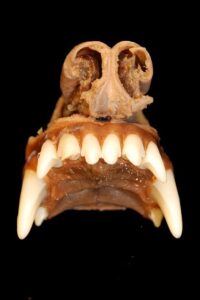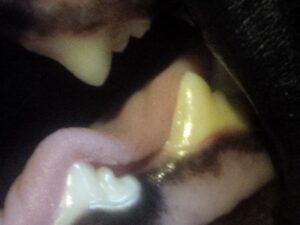 This is a compilation of the anatomy of your dogs’ mouth, the ability to do even more damage by applying extreme pressure, the ability to thrash their head and the false sense of security humans have in believing that their dog will never bite their children.
This is a compilation of the anatomy of your dogs’ mouth, the ability to do even more damage by applying extreme pressure, the ability to thrash their head and the false sense of security humans have in believing that their dog will never bite their children.
Is his bark really bigger than his bite?
Let’s talk about the anatomy of your dog’s mouth. Dogs have 42 teeth. Humans have 32 but that includes wisdom, 3rd molars; which not everyone has, so most of us have 28 teeth tor less because some may have been extracted for orthodontic purposes or other reasons.

Unlike humans, dogs do not have flat occlusal molars. anatomically designed for the purpose of mashing known as Masticating.

Here’s Merriam-Webster’s definition:
1: to grind, crush, and chew (food) with or as if with the teeth in preparation for swallowing. 2: to soften or reduce to a pulp by crushing or kneading.
I’m sure you have noticed that this is not something your dog does.
Dog’s teeth are designed to tear, rip, cut through and crush. The action of crushing is accomplished by what is called the “PSI” or pounds per square inch of pressure the dog can apply. I emphasize the description so that you have a clear picture of the damage a dog can do when biting. Additionally, by thrashing their head, an act by which a dog would kill prey in the wild, a dog can put excessive body weight and muscle strength behind the bite, immobilizing his victim further.
The average family dog has 230-250 pounds per square inch of jaw pressure. Taking an average from a handful of different sources, these numbers will give you an idea of the PSI of some popular breeds. I have also read on many favored websites that the psi of some breeds can be as much as 2000. This is simply not true. However, a large breed dog with superior biting strength can break bones or cause comminuted fractures depending on where the bite is.
Labrador Retriever 230
German Shepherd 235
Pit Bull 235
Rottweiler 325
Akita 300 – 400
Cane Corso 550 – 700?
Bandogge 650 – 730?
Large breed dogs that are bred as guard dogs are overprotective, show signs of being unpredictable, easily agitated, guard resources, fidgety, or high-strung, or untrained, previously abused and not well socialized, are not my choice of pet for a child.






